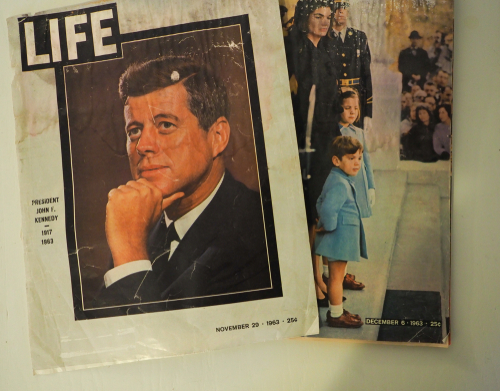
The assassination of President John F. Kennedy remains one of the most pivotal moments in American history, shrouded in mystery and controversy. Despite the passage of time, the official narrative, as presented by the Warren Commission, has been met with skepticism and critical examination. Jerome Corsi and David Mantik, in their groundbreaking work, "The Assassination of John F. Kennedy: The Final Analysis," offer a compelling reevaluation of this tragic event, challenging the established account with new forensic evidence and analysis.
At the heart of their investigation is a meticulous examination of the autopsy X-rays of President Kennedy, which are preserved in the National Archives. Through their analysis, Corsi and Mantik present a startling conclusion: Kennedy was struck by three bullets to the head, with two entering from the front and one from the back at a lower angle. This finding is further supported by the independent review conducted by Dr. Michael Chesser, who examined the lateral X-ray film, corroborating the presence of multiple entry wounds.
Video footage of JFK assasination appears to show that the driver shot him. Why else would Jackie climb towards the back? & didn’t C_A convince him to ride in convertible? Driver couldn’t pull it off in An inclosed vehicle. ❓❓❓ pic.twitter.com/L7vnCHZ6Gx
— Jed (@JED_Psalm_18_29) November 28, 2020
The significance of these findings cannot be overstated. They directly challenge the Warren Commission's single bullet theory, which posits that a lone gunman, Lee Harvey Oswald, was responsible for the assassination.
According to Corsi and Mantik, the forensic data and eyewitness testimonies they've gathered paint a different picture—one that suggests the involvement of multiple shooters, firing from various directions.
Assassination video of JF Kennedy#assasination #JFK #President #USA pic.twitter.com/RDM0brLdLp
— Gems Of CCTV (@GemsOfCCTV) November 26, 2023
This revelation raises profound questions about the true nature of the assassination and the entities involved. The authors argue that the discrepancies between the official narrative and the forensic evidence point to a more complex and orchestrated event than previously acknowledged. The implications of such a conclusion are far-reaching, suggesting potential conspiracies at play and a deliberate attempt to mislead the public and obscure the truth.
Witness testimonies, long overlooked or dismissed by mainstream narratives, play a crucial role in Corsi and Mantik's analysis. These accounts, which describe hearing shots from multiple directions, lend further credence to the theory of multiple gunmen. Such testimonies, when considered alongside the forensic evidence, offer a compelling counter-narrative to the lone gunman theory.
The conservative perspective on this matter is not merely an exercise in historical revisionism but a call for transparency, accountability, and the pursuit of truth. It underscores the importance of questioning and critically examining official narratives, especially when they fail to account for all available evidence. The assassination of JFK, a transformative event in American history, deserves nothing less than our unwavering commitment to uncovering the full extent of what transpired that fateful day in Dallas.
In conclusion, "The Assassination of John F. Kennedy: The Final Analysis" by Jerome Corsi and David Mantik serves as a crucial contribution to our understanding of JFK's assassination. By challenging the established narrative with rigorous forensic analysis and highlighting the inconsistencies in the Warren Commission's report, they invite us to reconsider what we thought we knew about one of the darkest chapters in American history. As conservatives, we must champion the cause of truth and justice, ensuring that the real story of JFK's assassination is told, free from the constraints of political agendas and misinformation.










